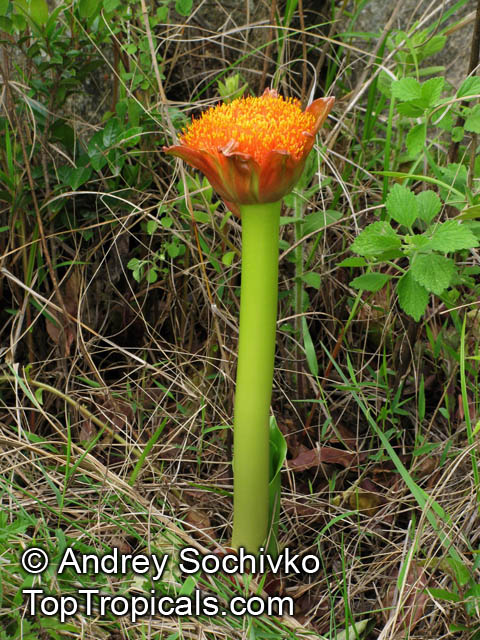Scadoxus puniceus (Paintbrush Lily)
Top Tropicals Plant Encyclopedia
Botanical name: Scadoxus puniceus
Common name: Paintbrush Lily
Family: Amaryllidaceae (Formerly:Amaryllidaceae / Liliaceae)
Subfamily: Amaryllidoideae
Origin: South Africa








Scadoxus puniceus is a small shrub that originates from South Africa and can grow to between 2 and 5 feet tall. It prefers semi-shade and regular watering but can tolerate moderate water. The most eye-catching feature of this plant is its deep red to crimson, vinous flowers, which usually bloom from the middle of summer to early fall.
The plant is ethnomedical due to its powerful anti-inflammatory, anti-bacterial and anti-fungal properties, making it especially popular for healing all types of skin issues. It is also an attractive addition to any garden due to its vibrant blossoms. The cheery flowers will attract a variety of butterflies and hummingbirds to your garden.
Grown in USDA Zone 9-11, Scadoxus puniceus is also quite easy to care for, needing little maintenance and water. For optimal care, water the plant regularly, fertilize it during the growth period and even mulch it in winter. In colder climates, the plant can best be grown in a pot on the patio or balcony. Make sure to choose a sunny spot and shelter it from strong winds. If you opt to grow it in a pot, make sure to water it with regularity and fertilize it with a balanced fertilizer every six weeks.
Although Scadoxus puniceus is a beautiful addition to any garden, it is important to bear in mind that this plant is poisonous and should not be eaten. Nevertheless, it's a great choice for any garden and its vibrant blossoms and ethnomedical properties make it an attractive and beneficial addition.
